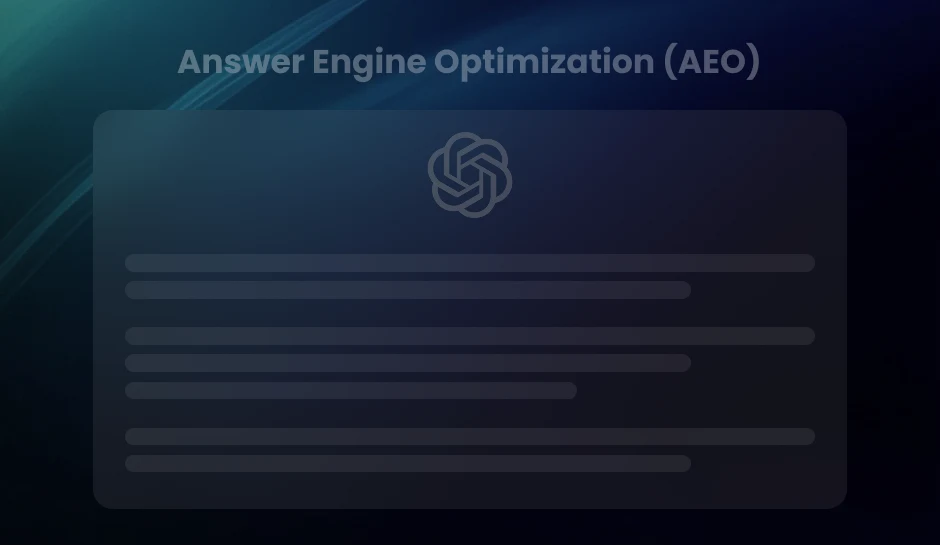
Machine Learning for Lead Scoring: Boost Sales Efficiency
Machine learning is essential in lead scoring, offering improved accuracy and efficiency. It helps businesses prioritize sales and marketing efforts effectively. Explore how machine learning reshapes strategies, ensuring better targeting and smarter decisions.
In the quest for sales efficiency and effectiveness, the question of why score leads has a clear-cut answer: to prioritize sales outreach and allocate resources where they will have the highest return. Traditional lead scoring has served as the keystone of qualifying leads, relying on static, rule-based systems that often fail to capture buyer intent’s dynamic and nuanced nature. However, the lead scoring process has been transformed with the advent of machine learning models.
As organizations shift towards data-driven decision-making in sales and marketing, the approach to lead qualification has become more sophisticated. Machine learning allows for a predictive lead scoring model that adapts over time, continually refines itself, and unlocks patterns in customer data that traditional methods might overlook. When integrated with website behavior data and insights from the purchase funnel, This proactive form of lead scoring engenders smarter sales conversations, higher conversion rates, and, ultimately, greater revenue growth.
Within this authoritative discourse, key terms such as sales, lead scoring, machine learning, and customer profiles will be defined and explored, laying the groundwork for a deep dive into how machine learning is rewriting the playbook for sales professionals globally.
Revolutionizing Lead Scoring with Machine Learning
Machine Learning (ML) revolutionizes lead scoring, surpassing traditional methods with dynamic analysis, pattern recognition, and predictive capabilities. Unlike static, rule-based systems, ML integrates vast datasets to reveal intricate customer behaviors and tendencies, enhancing scoring accuracy exponentially. Whether applied to responses from email campaigns or interactions with a specific product (business), ML empowers businesses to adapt swiftly and make informed decisions by automating analysis and uncovering hidden insights.
Discover the Machine Learning Muscle Behind Effective Lead Scoring
Lead Scoring Model Machine Learning is a term that signifies the blend of cutting-edge technology with marketing savvy.
At their core, machine learning models in lead scoring are crafted to classify and prioritize leads based on their likelihood of converting into valuable customers. This general classification task can be accomplished through various algorithmic approaches, each bringing its strengths.
Examples of Models: Logistic Regression, Decision Trees, Neural Networks
Regarding specifics, several machine learning models have proven particularly effective for lead scoring, regarding specifics, several machine learning models have proven particularly effective for lead scoring:
- Logistic Regression
- Decision Trees
- Neural Networks
A stalwart in the machine learning arsenal, logistic regression is used for binary classification. Assessing the probability of a lead’s conversion yields a straightforward and interpretable model suitable for many lead scoring applications.
These models shine in their interpretability and simplicity. By creating a branching structure akin to a tree, decision trees break down the decision process into a series of simple rules, making it easier to understand why a lead was scored a certain way.
For businesses seeking a more advanced approach, neural networks offer a potent solution, particularly deep learning models. With their complex architectures capable of capturing nonlinear relationships, they can unearth intricate patterns in lead data that simpler models might miss.
Random Forests in Credit Scoring
Random Forests are a powerful ensemble learning technique used in credit scoring to enhance prediction accuracy and reduce the risk of overfitting. This model builds multiple decision trees and combines their outputs to produce a more stable and reliable prediction. By leveraging AI in lead management, Random Forests can also help businesses identify high-value prospects more precisely, improving overall decision-making in sales and credit evaluations.
Why Random Forests Are Effective in Credit Scoring
- High Accuracy:
- Robustness Against Overfitting:
- Feature Importance Analysis:
- Handles Large and Complex Datasets:
- Scalability and Adaptability:
By aggregating the results of multiple decision trees, Random Forests minimize errors and improve predictive performance, allowing you to better segment and target your Audience with more precision.
Unlike single decision trees, which can be prone to overfitting, Random Forests generalize better across different borrower profiles.
The model identifies the most influential factors in creditworthiness, such as credit history, income stability, and repayment patterns.
Random Forests can process vast amounts of structured financial data, making them suitable for large-scale credit assessments.
Financial institutions can retrain the model as new data becomes available, ensuring continuous improvements in risk evaluation.
Application of Random Forests in Credit Scoring
- Loan Default Prediction:
- Fraud Detection:
- Customer Segmentation:
By analyzing past borrower behaviors, Random Forests help financial institutions assess the likelihood of default.
The model can flag unusual financial activities by detecting deviations from normal spending and repayment patterns.
Lenders can classify borrowers into different risk categories, allowing for more personalized loan offers and interest rates.
Types of Machine Learning Models Used in Credit Scoring
Credit scoring relies on machine learning models to assess a borrower’s creditworthiness based on historical data, financial behavior, and risk factors. Several ML models are widely used in credit scoring, each offering unique advantages in predicting loan defaults and financial reliability. Incorporating insights such as User intent and patterns in Trade activity can further refine these models, making predictions more accurate and contextually relevant.
- Logistic Regression
- Decision Trees
- Random Forest
- Gradient Boosting Machines (GBM)
- Neural Networks
A fundamental choice in credit scoring, logistic regression is a binary classification model that predicts the likelihood of a borrower defaulting. Due to its interpretability, it is favored by financial institutions requiring transparency in decision-making.
Decision trees break down the credit scoring process into a series of rules, making them easy to interpret. They classify borrowers based on features like income, credit history, and payment patterns, allowing lenders to understand why a particular score was assigned.
An extension of decision trees, random forests enhance accuracy by combining multiple decision trees to reduce overfitting. This model is useful in credit scoring as it balances predictive power with stability, improving risk assessment.
GBM models, including XGBoost and LightGBM, are powerful tools in credit scoring due to their ability to capture complex relationships in data. They iteratively improve weak predictions, making them highly effective for assessing borrower risk.
Neural networks, particularly deep learning models, can process vast amounts of structured and unstructured data, such as transaction history and alternative credit sources. While highly accurate, they are often considered black-box models, making regulatory compliance a challenge in financial sectors.
Training and Validation of Machine Learning Models for Lead Scoring
Developing a robust lead scoring model using machine learning is a process that requires careful attention to data training and model validation. Ensuring the highest degree of accuracy and efficiency in scoring leads is paramount for businesses to prioritize their marketing and sales efforts effectively.
The Machine Learning Model Development Process
Training a machine learning model for lead scoring, involves feeding a substantial amount of labeled training data into an algorithm to learn from patterns and relationships. Feature selection and model tuning play crucial roles in optimizing the model’s predictive power. Once a potential model has been established, it undergoes a series of evaluations to validate its predictive accuracy on unseen data sets.
Importance of Cross-Validation and Overfitting Avoidance:
Cross-validation techniques are essential to mitigate the risk of overfitting—where a model performs well on training data but poorly on new, unseen examples. By using cross-validation, you can ensure that your model delivers on its value proposition by consistently performing well on new data, not just the training set. Cross-validation involves partitioning the dataset into complementary subsets, training the model on one subset while validating it against another. This process helps to ensure that the model generalizes well to new data.
k-fold cross-validation is a popular method where the original sample is randomly partitioned into k equal-size subsamples. Of the k subsamples, a single sample is retained as the validation data for testing the model, and the remaining k-1 samples are used as training data. This process is repeated k times, with each subsample used once for validation, ensuring that the model’s value proposition is robust across different data segments. Ensuring the model has a good balance between bias and variance to prevent overfitting and underfitting, respectively. Additional techniques, such as regularization, can penalize complexity and improve model robustness.
Thorough validation leads to developing a model that not only understands the dynamics of the historical data but also accurately predicts the lead score of future potential clients. The goal is to create a reliable and sustainable tool that adapts to new trends and behaviors as markets evolve.
Traditional Credit Scoring Approaches vs. Credit Scoring With Machine Learning
Credit scoring has traditionally relied on predefined rules and statistical models, but machine learning has introduced a more dynamic and predictive approach. By incorporating data from Engagement marketing campaigns and understanding the behavior of your Target market, machine learning models can offer more accurate and personalized credit assessments. Below is a comparison of traditional credit scoring methods and machine learning-driven credit scoring.
| Feature | Traditional Credit Scoring | Credit Scoring With Machine Learning |
|---|---|---|
| Methodology | Rule-based models using fixed criteria (e.g., credit score thresholds) | Data-driven models that learn patterns from historical data |
| Data Sources | Limited to structured financial data like credit history, income, and debt-to-income ratio | Uses both structured and unstructured data, including social media activity, transaction history, and alternative credit sources |
| Decision Speed | Manual or semi-automated, leading to slower approval times | Fully automated and real-time processing, significantly reducing approval time |
| Accuracy | May overlook hidden patterns in borrower behavior | Identifies complex relationships and improves predictive accuracy |
| Default Rates | Higher risk due to static assessment models that fail to capture emerging trends | Lower default rates due to predictive analytics and continuous learning |
| Analysis Methods | Relies on historical data and linear relationships to determine creditworthiness | Uses advanced ML techniques like neural networks and gradient boosting to detect non-linear relationships |
| Risk of Bias | Can be biased due to rigid rules and outdated criteria | Mitigates bias by analyzing diverse factors and real-time data |
| Fraud Detection | Less effective at detecting anomalies and fraudulent patterns | Can detect unusual behaviors and flag potential fraud |
| Scalability | Limited scalability; rules need manual adjustments | Easily scales to process large datasets and new credit applicants |
Most Common Machine Learning Confidence Scores
Confidence scores in machine learning represent the probability or certainty of a model’s prediction. In credit and lead scoring, these scores help assess the reliability of classifications and decisions, which can significantly enhance Customer relationship management within an Organization by fostering trust in the decision-making process. Here are the most common confidence scoring methods used in machine learning:
- Probability Scores
- Models like Logistic Regression, Random Forests, and Neural Networks assign probability values between 0 and 1 to indicate the likelihood of a particular outcome.
- Example: A probability score of 0.85 for loan approval means an 85% confidence in the borrower’s creditworthiness.
- Log Odds (Logit Score)
- Logistic Regression uses log odds to convert probability into a logarithmic scale for better interpretability.
- Formula: Logit(P) = log(P / (1 – P)), where P is the probability of an event occurring.
- Helps in ranking leads or borrowers based on their likelihood of conversion or repayment.
- Z-Score (Standard Score)
- Measures how far a prediction deviates from the mean, in terms of standard deviations.
- Often used in anomaly detection and fraud detection to identify unusual patterns in credit applications.
- Example: A Z-score of 3 indicates a highly unusual borrower profile.
- Confidence Intervals
- A range within which the true value is expected to lie with a given probability (e.g., 95% confidence interval).
- Useful for understanding uncertainty in model predictions, particularly in risk assessment.
- Softmax Scores
- Used in Neural Networks and Deep Learning Models for multi-class classification.
- Assigns confidence scores to each possible category, summing up to 1.
- Example: In credit risk classification, a model may predict:
- Low Risk: 70%
- Medium Risk: 20%
- High Risk: 10%
- Entropy-Based Confidence
- Measures uncertainty in a model’s predictions using entropy (disorder).
- High entropy = low confidence, while low entropy = high confidence.
- Used in active learning to identify cases where additional data may improve model performance.
- Fuzzy Logic Confidence Scores
- Assigns a degree of confidence rather than a strict binary classification.
- Useful for credit scoring when dealing with uncertain or incomplete data.
Ethical Considerations and Bias in Machine Learning Lead Scoring
Machine learning has revolutionized lead scoring, but addressing ethical considerations and potential biases is vital. Maintaining ethical integrity and fairness is crucial for consumer trust and brand reputation.
Recognizing and Mitigating Bias in Data and Models
Resource and Expertise Requirements
- Data Bias:
- Perform regular audits to identify and correct biased patterns.
- Use techniques like sampling or resampling for a representative dataset.
- Prioritize transparency by documenting data sources and model criteria.
- Automated Decisions:
- Establish ethical guidelines for model deployment and operation.
- Involve stakeholders to align outputs with company values.
- Implement oversight mechanisms like human-in-the-loop systems for review and intervention.
Historical inequalities in sales and marketing data can skew lead scoring outcomes.
Lead scoring models make decisions impacting sales and marketing strategies.
Ethical Implications of Automated Decision-Making
Striving for ethical integrity in machine learning and lead scoring is both a moral imperative and a strategic advantage. Addressing bias and considering ethical implications ensures that lead scoring models serve their purpose without compromising fairness and transparency.
Additionally, implementing machine learning in sales requires ethical oversight to ensure unbiased decision-making, fostering trust and long-term customer relationships. This approach not only enhances the Customer experience but also aligns with the core principles of your Business model, ensuring that data-driven decisions benefit both the customer and the organization.
Future Trends and Developments in Lead Scoring Technologies
Software as a service (saas) platforms are revolutionizing lead scoring, enabling better market segmentation and more personalized targeting. This approach enhances brand awareness by allowing businesses to optimize campaigns and reach the right audience more effectively.
Predictive Analytics and Expanding Data Sources
- Enhanced Predictive Analytics:
- Continuous Creation of New Features:
Leveraging a broader spectrum of data sources, including social media interactions and real-time browsing behaviors.
Enabling the continuous creation of new, more accurate predictive features.
The Role of AI and Deep Learning in Advanced Scoring Techniques
- AI-driven Systems:
- Deep Learning Algorithms:
Processing and learning from vast amounts of unstructured data.
Capturing subtle nuances in lead behavior for more accurate scoring.
Future Developments
- Continuous Learning:
- Automated Feature Engineering:
- Advanced Natural Language Processing (NLP):
- Explainable AI:
Dynamic adaptation of lead scoring models in real-time.
AI-driven automation of predictive feature discovery and variable interactions.
Deepening understanding of textual data for enriched lead scoring insights.
Enhancing transparency and trust in lead scoring algorithms.
Best Practices for Implementing Machine Learning in Lead Scoring Systems
Establishing a Lead Scoring Model Machine Learning system can be transformative for your sales and marketing teams. However, to ensure its success, following certain best practices during the implementation process is important. Implementing machine learning in sales allows businesses to automate lead evaluation, integrate Marketing automation to streamline outreach, prioritize high-potential prospects, and improve overall conversion rates with data-driven insights.
Steps to Ensure a Smooth Implementation
Start with Quality Data: Ensure your datasets are clean, relevant, and well-structured. Machine learning models are only as good as the data they are trained on, so prioritize data quality from the outset.
- Define Clear Objectives:
- Choose the Right Model:
- Test and Iterate:
- Monitor Performance:
Understand and define what you want to achieve with your lead scoring model. Clear objectives help tailor the machine learning algorithms to your specific needs.
Select an appropriate machine learning model based on the complexity of your dataset and the granularity required in scoring leads, ensuring that it aligns with the potential Business opportunity and the strategic goals of your organization.
Use A/B testing to compare the machine learning model’s performance against your previous scoring system and iterate based on the results and feedback from end-users.
Monitor the model’s performance and adjust as needed. The model should adapt to new patterns and insights from incoming data over time.
Essential Machine Learning Metrics for Evaluating Model Performance
Understanding key performance metrics ensures models make accurate predictions when applying machine learning in credit scoring and lead management. The four fundamental evaluation metrics—true positives (TP), true negatives (TN), false positives (FP), and false negatives (FN)—help assess a model’s effectiveness in identifying potential leads or creditworthy borrowers.
True Positives (TP) – Correctly Identified Positives
A true positive occurs when the model correctly classifies a positive instance.
- In Credit Scoring:
- In Predictive Lead Scoring:
The model predicts a borrower will repay their loan, and they do.
The model ranks a lead as high potential, and they successfully convert into a customer.
True Negatives (TN) – Correctly Identified Negatives
A true negative happens when the model correctly predicts a negative outcome.
- In Credit Scoring:
- In Lead Management:
A high-risk borrower is flagged and later defaults on their loan.
A lead is classified as uninterested, and they do not engage with the business.
False Positives (FP) – Incorrectly Identified Positives
A false positive occurs when the model mistakenly classifies a negative case as positive.
- In Credit Scoring:
- In Lead Management:
- Impact:
A borrower is approved for a loan but fails to repay it.
A lead is predicted to convert but does not make a purchase.
Leads to wasted resources, financial risk, and inefficiencies in AI in lead management.
False Negatives (FN) – Incorrectly Identified Negatives
A false negative occurs when the model fails to recognize a positive instance.
- In Credit Scoring:
- In Lead Scoring:
- Impact:
A creditworthy borrower is denied a loan.
A strong prospect is incorrectly classified as a low-priority lead.
Missed revenue opportunities and reduced efficiency in implementing machine learning in sales.
Challenges and Limitations of Machine Learning in Lead Scoring
While software development has enabled more sophisticated lead scoring models, challenges remain in integrating these models into existing marketing strategy frameworks. Issues such as data quality, model complexity, and ethical concerns can limit the effectiveness of machine learning in accurately predicting lead potential.
Data Quality and Availability
- Data Quality:
- Data Availability:
- Model Complexity:
- Interpretability:
- Overfitting:
- Generalization:
- Ethical Implications:
- Fairness Considerations:
- Resource Intensive:
- Expertise Requirement:
- Machine learning ensures precise lead scoring, evolving continuously for better predictions
- Automated lead scoring saves time, letting sales teams focus on promising leads.
- Machine learning scales effortlessly with business growth, handling complex data volumes.
- Adopting machine learning uncovers valuable data insights for targeted marketing.
High-quality, clean data is essential for accurate predictions. Inconsistent or incomplete data can lead to biased results.
Accessing relevant and diverse datasets can be challenging, especially for organizations with limited data resources.
Model Complexity and Interpretability
Complex models may be difficult to interpret and explain, affecting stakeholder trust.
Some models lack transparency, hindering understanding of lead scoring decisions.
Overfitting and Generalization
Models may capture noise or irrelevant patterns, leading to poor performance on new data.
Ensuring models generalize well to unseen leads is crucial for accuracy.
Ethical and Fairness Considerations
Models may perpetuate biases in data, resulting in unfair treatment of certain leads.
Maintaining fairness and equity in lead scoring is essential to prevent discriminatory outcomes.
Resource and Expertise Requirements
Implementing and maintaining ML-based systems requires significant resources.
Recruiting and retaining skilled personnel can be challenging.
Key Takeaways
Conclusion
The integration of machine learning in lead scoring represents a groundbreaking advancement in targeting and nurturing potential customers. By harnessing the power of machine learning, businesses can improve prediction accuracy, enhance efficiency, and unlock valuable insights from their data. This revolution in lead scoring is not just a technological upgrade; it’s a strategic imperative for staying competitive in today’s digital landscape. Embracing machine learning in lead scoring practices positions companies to gain a significant market edge and drive success in their marketing and sales strategies.
Are you ready to revolutionize your lead scoring? Talk to Us!
Contact us at info@diggrowth.com for further inquiries.
Ready to get started?
Increase your marketing ROI by 30% with custom dashboards & reports that present a clear picture of marketing effectiveness
Start Free Trial
Experience Premium Marketing Analytics At Budget-Friendly Pricing.

Learn how you can accurately measure return on marketing investment.
Additional Resources
Don’t Let AI Break Your Brand: What Every CMO Should Know
AI isn’t just another marketing tool. It’s changing...
Read full post postFrom Demos to Deployment: Why MCP Is the Foundation of Agentic AI
A quiet revolution is unfolding in AI. And...
Read full post postAnswer Engine Optimization (AEO): The New Frontier of SEO in 2026
As digital experiences continue to evolve, so does...
Read full post postFAQ's
Lead scoring models help prioritize sales and marketing efforts by assigning leads scores based on demographics and behavior.
In machine learning, a scoring model predicts outcomes based on learned patterns. In lead scoring, ML scoring models analyze lead data to predict the likelihood of conversion, aiding in prioritizing sales efforts.
Machine learning-based lead scoring uses data-driven algorithms to evaluate and rank leads based on conversion potential. Unlike traditional rule-based methods, it continuously learns from data patterns, refining predictions to enhance sales efficiency and maximize return on investment.
A business can implement it by collecting high-quality data, selecting the right machine learning algorithms, training models on historical data, validating performance through testing, integrating with CRM systems, and continuously refining the model based on new insights and sales feedback.
Machine learning enhances traditional lead scoring by automating analysis, identifying hidden patterns, reducing human bias, and dynamically adjusting to market trends. It provides real-time predictive insights, helping businesses prioritize high-potential leads and improve conversion rates with greater accuracy.
Challenges include ensuring data quality, managing model complexity, addressing ethical concerns, avoiding bias, integrating with existing systems, and requiring skilled professionals for implementation and maintenance. Businesses must also continuously update models to adapt to evolving customer behaviors and market conditions.


